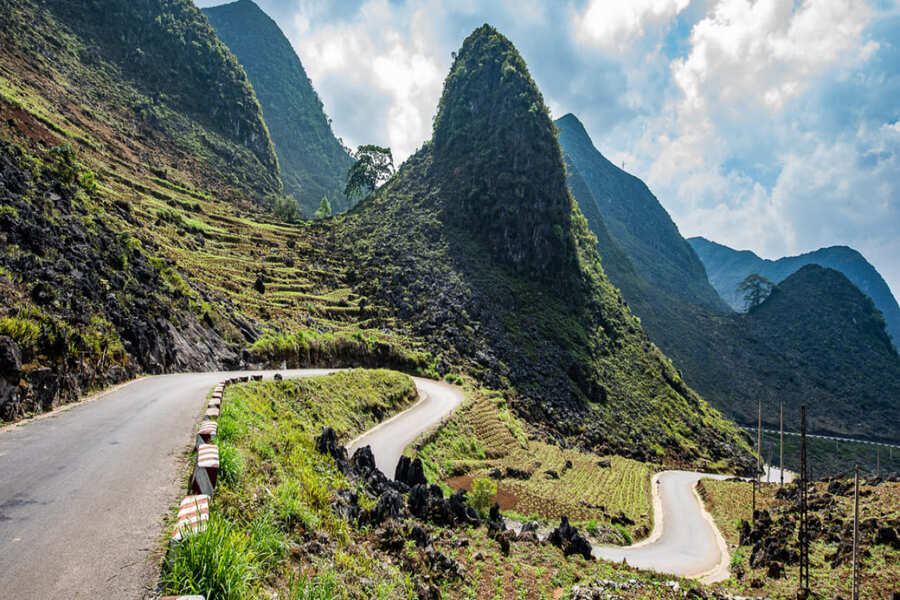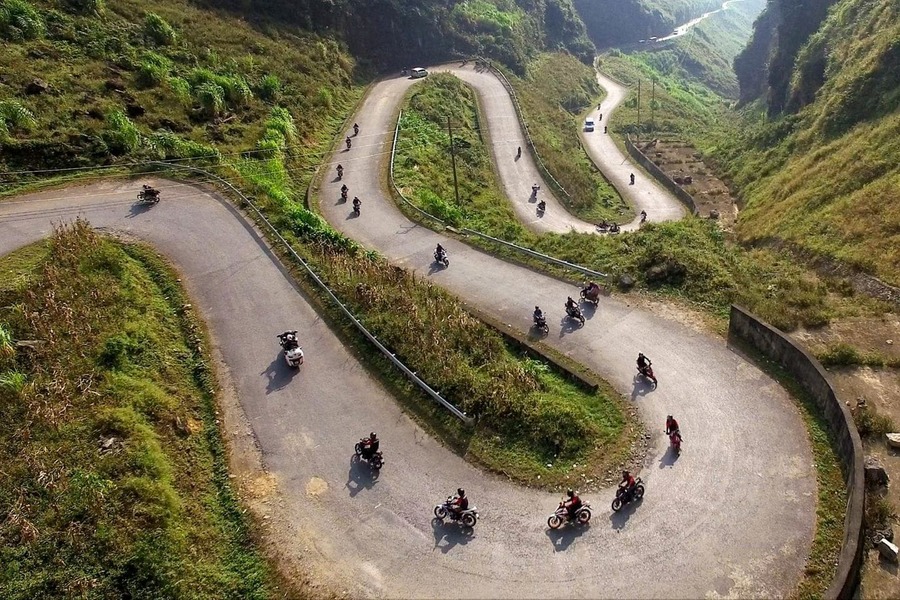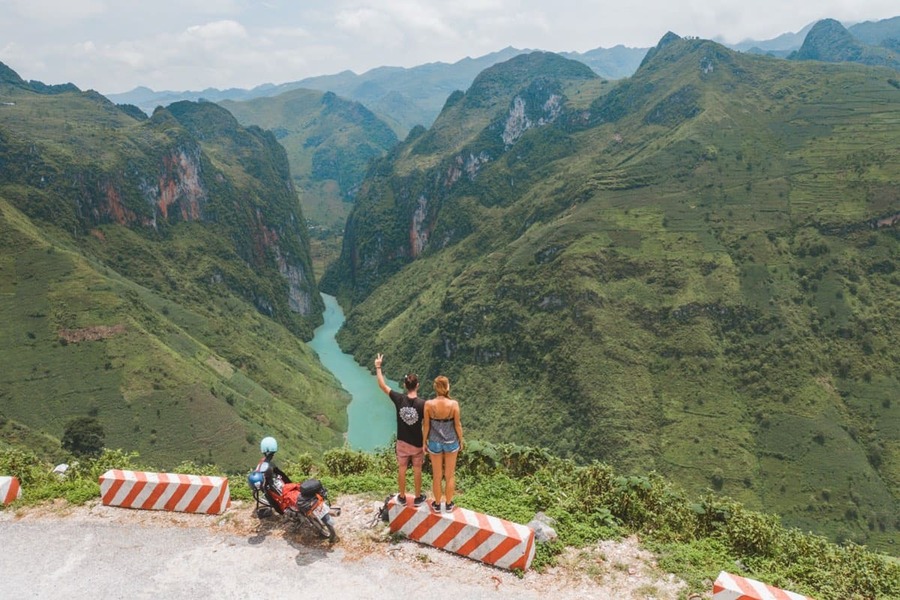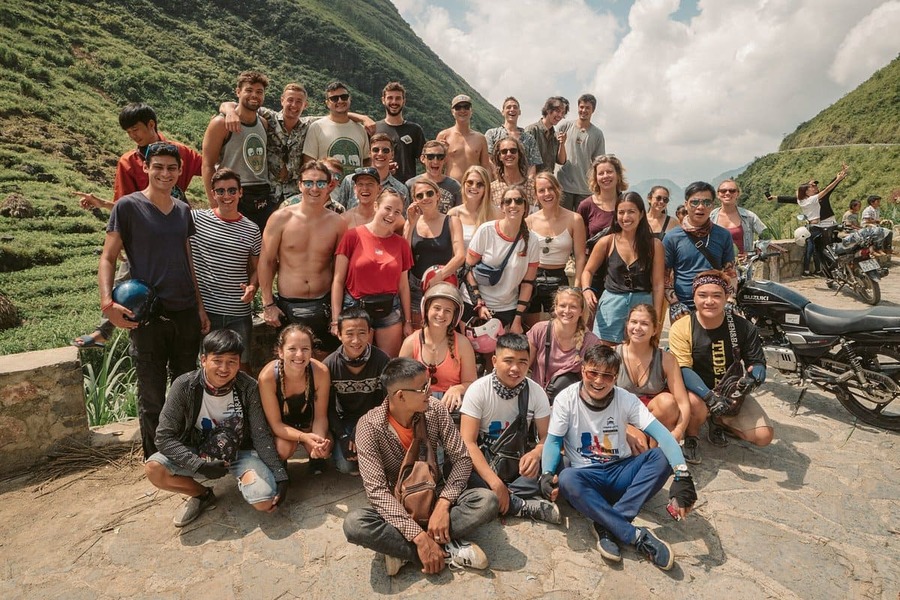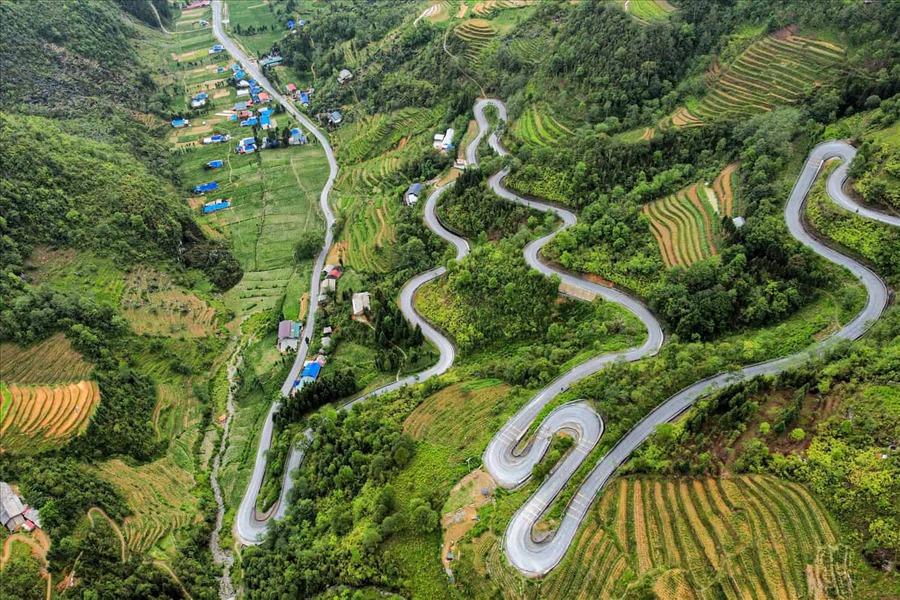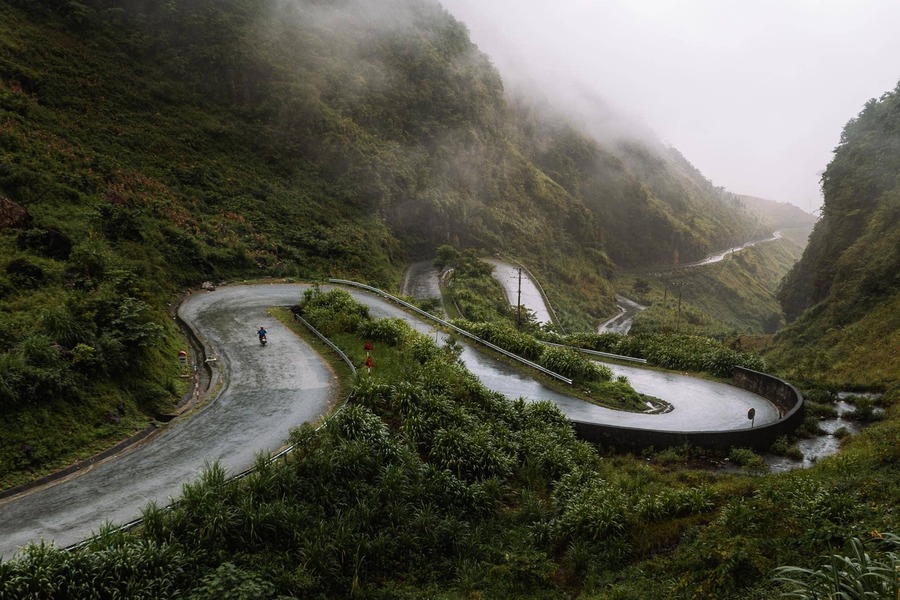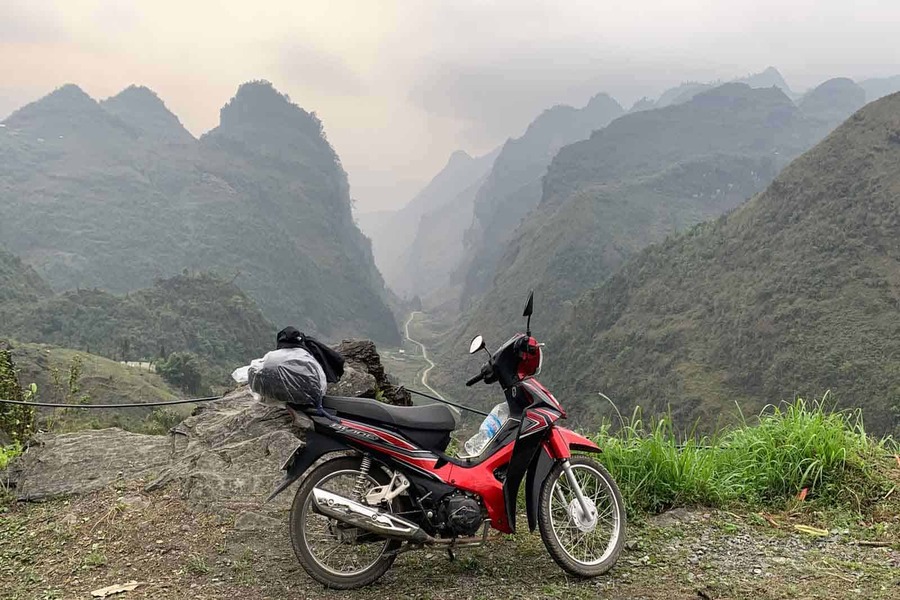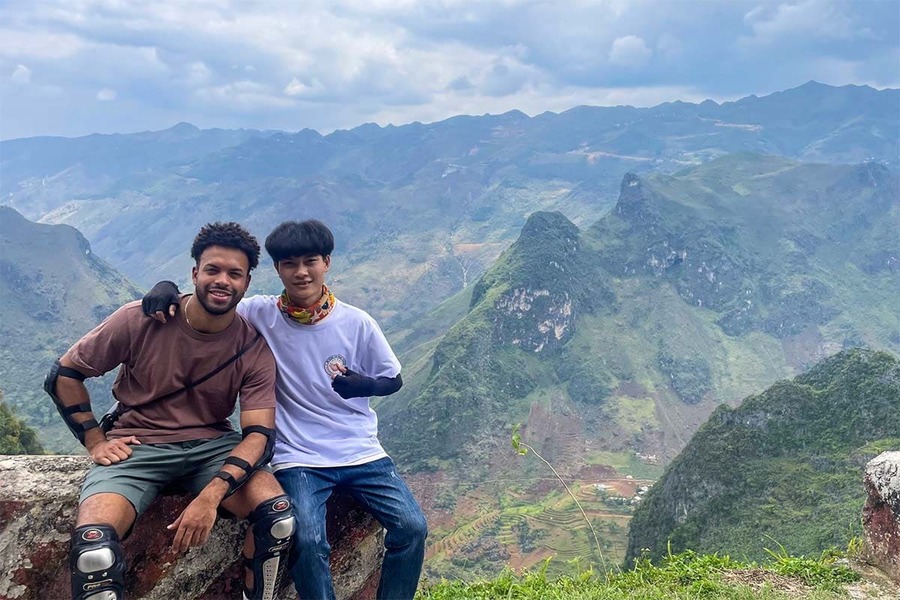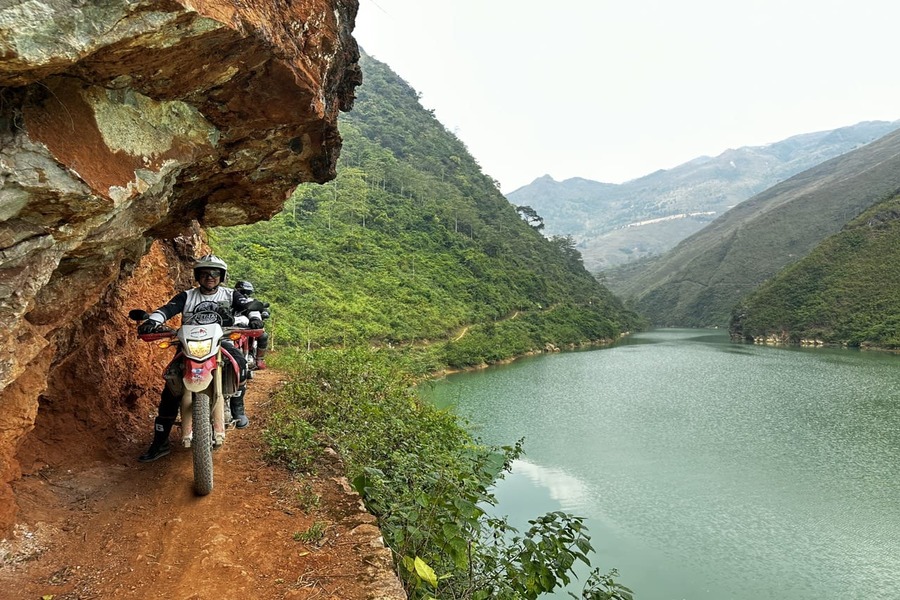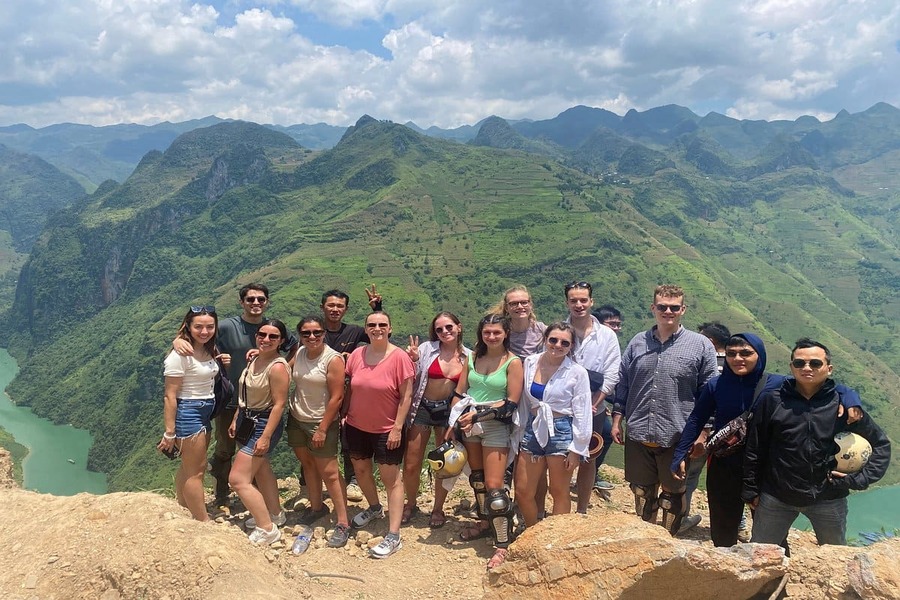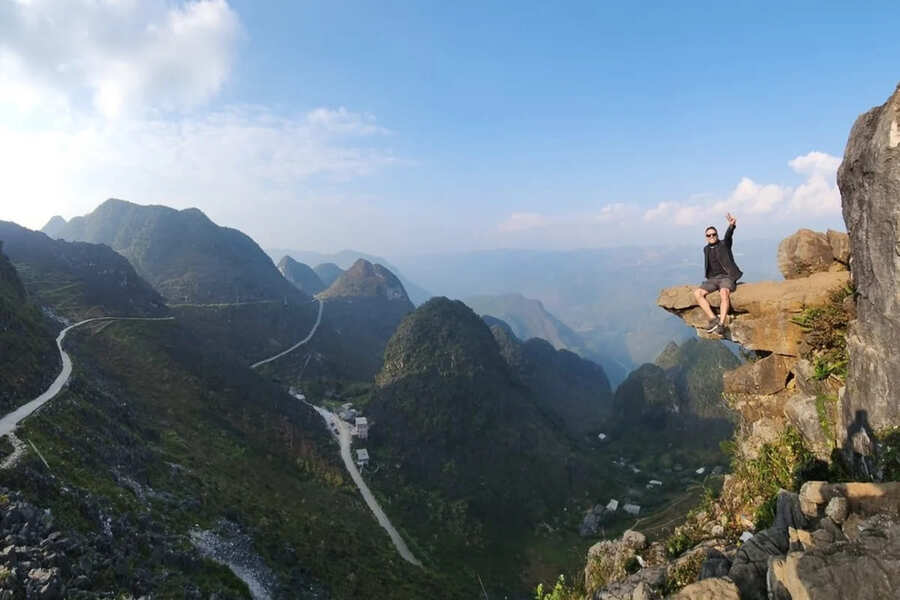Discover the Ha Giang Loop: A Journey Through Vietnam’s Northern Frontier
The Ha Giang Loop is a breathtaking road trip through Vietnam’s northern province of Ha Giang, renowned for its dramatic limestone peaks, winding mountain passes, and vibrant ethnic communities. This iconic route, often called Vietnam’s ultimate adventure, attracts travelers seeking raw beauty and cultural immersion. With over 1 million visitors annually to Ha Giang province, as reported by the Vietnam National Administration of Tourism, the loop offers a unique blend of adventure and authenticity. Whether you’re riding a motorbike along the legendary Ma Pi Leng Pass or exploring by car, this guide provides everything you need for a memorable Ha Giang Loop experience in 2025, including itineraries, costs, and practical tips. Ha Giang Loop experiences will be the highlight of your Vietnam tours!
Why the Ha Giang Loop Is a Must-Do in 2025
The Ha Giang Loop stands out for its unparalleled scenery and cultural richness, making it a highlight of Vietnam travel. Here’s what makes it special:
- Stunning Landscapes: From rugged cliffs to flower-filled valleys, the loop’s vistas, like Ma Pi Leng Pass, are among Vietnam’s most photogenic.
- Cultural Diversity: Home to 17 ethnic groups, including H’Mong and Dao, Ha Giang offers authentic village visits and vibrant markets.
- Adventure Options: Choose motorbike tours for thrill-seekers, car tours for comfort, or treks for cultural immersion.
- Accessibility: Easily reached from Hanoi (6 hours), Sapa (6-8 hours), or Ha Long Bay (8-10 hours) by bus or private transfer.
- Affordability: A 3-day trip costs $50-$150, offering great value for an unforgettable journey.
Whether you’re drawn to adrenaline-pumping rides or serene cultural stops, the Ha Giang Loop delivers an adventure like no other.
Planning Your Ha Giang Loop Adventure
To make your Ha Giang Loop trip seamless, consider these key factors:
Best Time to Visit the Ha Giang Loop
The Ha Giang Loop is beautiful year-round, but certain months enhance the experience:
- September to November: Cool weather (15-25°C/59-77°F), clear skies, and golden rice terraces make this ideal for motorbike tours.
- December to February: Buckwheat and plum blossoms create vibrant landscapes, though temperatures drop (10-20°C/50-68°F). January and February are perfect for flower enthusiasts.
- March to May: Mild temperatures (20-28°C/68-82°F) and blooming wildflowers suit car tours and treks.
- June to August: Lush greenery abounds, but rain and slippery roads can challenge motorbike riders.
Travel Tip: Aim for September-November or March-May for optimal weather and scenery.
Getting to Ha Giang City
Ha Giang city is the starting point for the loop. Here’s how to get there:
- From Hanoi: Overnight sleeper buses ($10-$15, 6-7 hours) or private cars ($50-$80) depart from My Dinh Bus Station.
- From Sapa: Buses ($15-$20, 6-8 hours) connect Sapa to Ha Giang, ideal for combining with a Sapa itinerary.
- From Ha Long Bay: Travel by bus or private transfer (8-10 hours, $20-$50).
- From Cao Bang: Buses (4-5 hours, $10-$15) link to Ha Giang, great for those visiting Ban Gioc Waterfall.
Travel Tip: Use offline maps like Maps.me for reliable navigation in remote areas.
Ha Giang Loop Routes and Duration
The Ha Giang Loop covers approximately 350-400 kilometers, starting and ending in Ha Giang city. Common durations include:
- 2 Days: A fast-paced trip hitting key sights like Ma Pi Leng Pass and Dong Van, best for those short on time.
- 3 Days: A balanced itinerary with cultural stops and scenic views, ideal for most travelers.
- 4 Days: A relaxed pace with extra time for villages and treks.
Travel Tip: A 3-day or 4-day itinerary offers the best mix of adventure and exploration.
Budgeting for the Ha Giang Loop
A typical Ha Giang Loop trip costs $50-$150 for 3-4 days, depending on your travel style:
- Motorbike Tours: $50-$100 (bike rental $5-$15/day, fuel $5-$10).
- Car Tours: $100-$150 (includes driver and fuel).
- Accommodation: $5-$15/night for homestays or $20-$40/night for hotels.
- Food: $1-$5/meal for local dishes like thang co (H’Mong stew) or banh cuon (rice rolls).
- Activities: $5-$20 for entry fees (e.g., Lung Cu Flag Tower) and boat trips.
Travel Tip: Budget around $20-$50/day for a comfortable trip, including food and lodging.
A 3-Day Ha Giang Loop Itinerary
This 3-day Ha Giang Loop itinerary balances adventure, culture, and scenery, perfect for motorbike or car tours.
Day 1: Ha Giang City to Dong Van
- Morning: Start in Ha Giang city after breakfast. Rent a motorbike ($5-$15/day) or arrange a car tour.
- Key Stops:
- Bac Sum Pass: A winding road with panoramic mountain views, perfect for photos.
- Quan Ba Heaven Gate: Offers stunning vistas of Tam Son Valley and the Twin Mountains.
- Yen Minh Pine Forest: A serene spot for a short walk or picnic.
- Tham Ma Pass: Tackle thrilling hairpin turns, a highlight for motorbike riders.
- Evening: Arrive in Dong Van, a UNESCO Geopark town. Stay at a homestay ($5-$10/night) and visit the Old Quarter’s H’Mong market.
- Distance: ~150 km, 6-8 hours with stops.
Travel Tip: Secure a Ha Giang Loop permit ($10) in Ha Giang city for border areas like Lung Cu.
Day 2: Dong Van to Meo Vac via Ma Pi Leng Pass
- Morning: Depart Dong Van after a local breakfast (banh cuon, ~$1).
- Key Stops:
- Lung Cu Flag Tower: Visit Vietnam’s northernmost point with views into China ($2 entry).
- Ma Pi Leng Pass: The loop’s highlight, a 20-km stretch with dramatic cliffs and Nho Que River views.
- Skywalk Ha Giang: A new attraction (opened 2024, $5 entry) for panoramic photos.
- Meo Vac Market: Explore a vibrant Sunday market with H’Mong and Dao crafts.
- Evening: Overnight in Meo Vac at a homestay ($5-$10/night) or a small hotel ($20-$30/night).
- Distance: ~80 km, 4-6 hours with stops.
Travel Tip: Take extra care on Ma Pi Leng Pass due to its steep, narrow roads.
Day 3: Meo Vac to Ha Giang City
- Morning: Depart Meo Vac after browsing local crafts.
- Key Stops:
- Du Gia Village: Discover H’Mong culture, waterfalls, and rice terraces, ideal for a short trek.
- Lung Tam Village: Visit traditional weaving workshops and homestays.
- Nam Dam Village: Engage with the Dao community for a cultural experience.
- Evening: Return to Ha Giang city and relax at a hotel ($20-$40/night).
- Distance: ~120-150 km, 5-7 hours with stops.
Travel Tip: Extend to a 4-day itinerary for more time in villages like Du Gia.
Ha Giang Loop Travel Options: Motorbike, Car, or Guided
The Ha Giang Loop offers flexible ways to explore, catering to different preferences:
Ha Giang Motorbike Tours
- Best For: Adventure enthusiasts with riding experience.
- Why Choose: Offers freedom to navigate winding roads and remote villages at your own pace.
- Considerations: Requires confidence on steep, narrow roads. Avoid night riding and rainy seasons (June-August).
- Cost: $50-$100 for 3 days (bike rental $5-$15/day, fuel $5-$10).
- Tips: Rent from reputable providers in Ha Giang city and carry a spare tire.
Ha Giang Loop Car Tours
- Best For: Families, groups, or those seeking comfort.
- Why Choose: Safer for rainy seasons or less experienced travelers, with a driver handling navigation.
- Considerations: Less immersive than motorbikes but more comfortable for long drives.
- Cost: $100-$150 for 3-4 days, including driver and fuel.
- Tips: Request a licensed driver with knowledge of the loop’s roads.
Guided Ha Giang Loop Tours
- Best For: First-time visitors or those seeking cultural insights.
- Why Choose: Expert guides provide local knowledge, ensure safety, and include authentic stops like village homestays.
- Considerations: Less flexibility than self-guided tours but ideal for hassle-free planning.
- Cost: $80-$150 for 3-4 days, depending on group size.
Travel Tip: Guided tours are great for first-timers to navigate the loop’s complex routes safely.
Practical Tips for a Safe and Enjoyable Ha Giang Loop
To ensure a smooth Ha Giang Loop experience, follow these tips:
Safety and Preparation
- Driving Safety: Wear helmets, check brakes, and avoid speeding on steep roads. For car tours, confirm the driver’s experience.
- Permits: Obtain a Ha Giang Loop permit ($10) from the Immigration Office in Ha Giang city for border areas.
- Weather Prep: Pack rain gear for summer (June-August) and warm layers for winter (December-February).
- Health: Bring a first-aid kit, DEET-based repellent, and stay hydrated in rural areas.
Travel Tip: Carry cash (Vietnamese dong) as ATMs are scarce outside Ha Giang city.
Accommodation on the Ha Giang Loop
- Homestays: Stay in H’Mong or Dao homestays in Dong Van, Meo Vac, or Du Gia ($5-$15/night) for cultural immersion.
- Hotels: Choose hotels in Ha Giang city ($20-$40/night) for comfort before and after the loop.
- Booking: Reserve homestays in advance for peak seasons (September-November, December-February).
Travel Tip: Homestays offer authentic meals and cultural experiences, often including local performances.
Packing Essentials
- Clothing: Lightweight layers for summer, warm jackets for winter months.
- Gear: Reusable water bottle, power bank, and offline maps (Maps.me).
- Documents: Carry passport copies and your Ha Giang Loop permit.
Travel Tip: Pack light but include sturdy shoes for treks in villages like Du Gia.
Sustainable Travel Practices
- Support Local Communities: Buy crafts and meals from H’Mong and Dao vendors to support local economies.
- Eco-Friendly Choices: Choose operators with sustainable practices, like minimizing plastic waste.
- Respect Culture: Dress modestly in villages and ask permission before photographing locals.
Travel Tip: Engage respectfully with communities to deepen your cultural experience.
Combining the Ha Giang Loop with Other Destinations
The Ha Giang Loop pairs well with nearby attractions:
- Sapa: Combine with Sapa’s rice terraces (6-8 hours by bus, $15-$20) for a northern Vietnam adventure.
- Ha Long Bay and Cat Ba: Extend to Ha Long Bay’s karsts or Cat Ba’s beaches (8-10 hours, $20-$50).
- Cao Bang: Visit Ban Gioc Waterfall before the loop (4-5 hours, $10-$15).
Travel Tip: Plan a multi-destination itinerary to maximize your northern Vietnam experience.
Why the Ha Giang Loop Is a 2025 Must-Do
The Ha Giang Loop is a journey through Vietnam’s heart, blending dramatic landscapes, vibrant cultures, and thrilling adventures. From the iconic Ma Pi Leng Pass to the serene villages of Du Gia, it offers:
- Unforgettable Sights: Capture stunning photos at Skywalk Ha Giang and Quan Ba Heaven Gate.
- Cultural Connections: Engage with H’Mong and Dao communities for authentic experiences.
- Flexible Options: Choose 2, 3, or 4-day tours to suit your schedule.
- Local Impact: Tourism supports Ha Giang’s ethnic communities, preserving their traditions.
Whether you’re a solo adventurer or traveling with family, the Ha Giang Loop promises memories that last a lifetime.
The Ha Giang Loop in 2025 is your chance to explore Vietnam’s northern frontier, with its rugged beauty, vibrant markets, and welcoming communities. Whether you choose a motorbike tour, a car journey, or a guided experience, this iconic route delivers adventure and authenticity in equal measure. Plan your trip with this guide, from Ha Giang city to the breathtaking Ma Pi Leng Pass, and immerse yourself in one of Vietnam’s most unforgettable experiences. Share your Ha Giang Loop plans or tips in the comments below!

